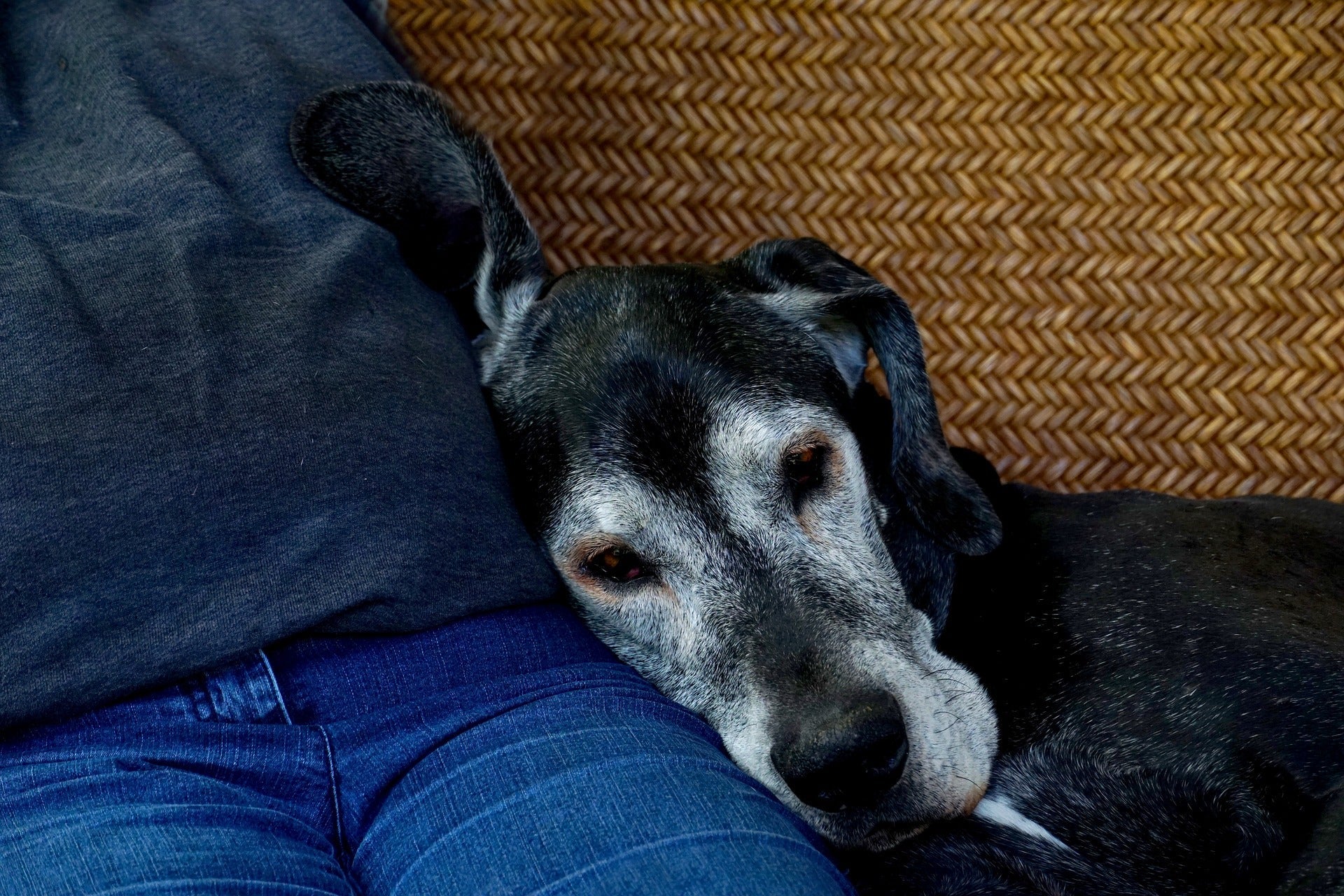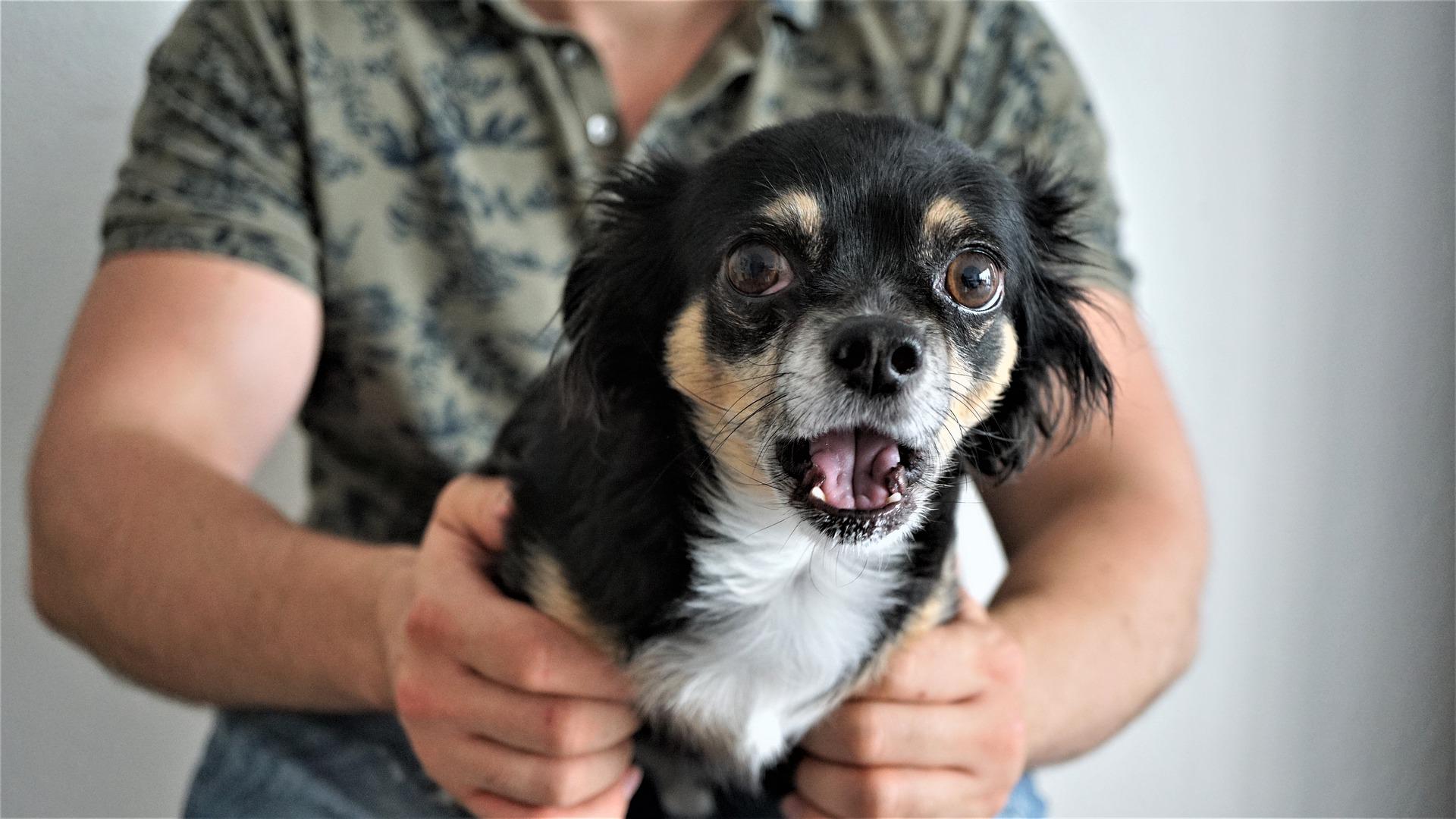With the leaves starting to change and the weather cooling, fall is officially in the air. While this time of year brings new opportunities to create fall memories like apple picking and pumpkin carving, it also brings new safety hazards for our pets.
In this post, we'll highlight 7 fall pet hazards you may not know about. Read on to learn how to keep your pet safe this fall, so you can both create new, fun fall memories.

1) Mushrooms
Cool, damp weather is the perfect breeding ground for mushrooms. Many of them grow under piles of raked leaves or other places that aren't easily noticeable to human eyes but quickly found by exploratory pets.
While many mushrooms are harmless to your pet, there are several species that are poisonous, and it can be hard to tell the difference without careful examination. So, it's best to keep your pet away from all mushrooms, and always supervise them when they're outside.
2) Rodenticides
As the weather starts to cool, more people experience mice or rat infestations inside their homes as the rodents seek warmer shelter inside. To combat these pests, many households use rat poisons or other rodenticides, creating a dangerous hazard for your pets.
Rodenticides are extremely poisonous to pets if ingested – and can even be fatal. Watch your pet closely during your walks to prevent them from picking up dangerous chemicals from your neighbors' homes and use pet-friendly pest control options in your own home.
3) Wildlife
During the fall, many animals prepare for hibernation and look for warm places to build their nests and dens. Animals like snakes and raccoons are more active during the fall, putting your pet at risk of injury and disease.
Always supervise your pet when they're outside and keep them secured on a leash if you're out for a walk. If you have cats, keeping them indoors is the best way to keep them safe from potential predators.
If you're outside with your pets, avoid places where wildlife would commonly be hiding. Snakes, for example, are likely to hide in enclosed places like under rocks or inside leaf piles. If your pet is ever bitten by a snake, seek veterinary attention immediately.
4) School Supplies
With back-to-school season in full swing, it's important to keep your children's school supplies out of your pet's reach.
Supplies like pencils and markers can quickly become dangerous if your pet ingests them. These supplies can lodge in your pet's esophagus or digestive tract, creating a choking hazard or a dangerous blockage. Similarly, wired notebooks can be dangerous if your pet chooses to chew on them.
Glue is another potentially hazardous school supply. Many parents will reach for high-strength glues when they help their children with school projects, but these glues are toxic to your pet if ingested.
Popular diisocyanate glue options like Gorilla Glue can lead to:
- Vomiting
- Loss of appetite
- Drooling
- Distended stomach
Even non-toxic glue options like traditional school glue sticks can lead to digestive upset for your pet, so it's best to keep them all out of your fury friend's reach.
5) Shorter Days
As we get closer to winter, the days get shorter, leading to less and less daylight during your evening walks.
Without proper precautions, walking your pet at night can be dangerous for both you and them. Not only might you be invisible to drivers in the darkness, but your ability to watch for wildlife and other hazards on your walk becomes challenged.
If you're planning on walking your pet at night, always make sure your pet wears a light-up collar and reflective vest. You should also carry a flashlight to help you see and wear a reflective vest or sash yourself.
It's also a good idea to avoid using headphones when you're walking at night. You need to be alert and tuned into your surroundings to stay safe, and headphones can block out the sounds of oncoming vehicles or wildlife.
6) Mothballs
Many people store their cold weather clothing with mothballs to protect wool and other natural fibers from being destroyed by moths, silverfish, and other pests. While mothballs are great for keeping your sweaters looking great for the new season, they can be deadly to your pets.
Because mothballs are made with a high concentration of insecticide, they are poisonous to your pets if ingested. Depending on their active ingredients, eating a mothball can lead to:
- Gastrointestinal upset
- Anemia
- Lethargy
- Seizures
- Liver damage
Long-term exposure to mothball fumes can also lead to symptoms like nose, eye, and lung irritation, sneezing, and coughing. Cats are more sensitive to mothball fumes than dogs are, but both are still affected.
Luckily, there are alternatives to mothballs that are safer for your pet, like cedar chips or moth traps.
7) Holiday Foods
The fall season comes with two of the biggest holidays for eating tasty treats: Halloween and Thanksgiving. While humans can enjoy eating the delicious food that these holidays have to offer, much of it is toxic to your pets.
Halloween candy, especially chocolate, is dangerous for pets. Methylxanthines, the chemicals in chocolate, can cause vomiting, lethargy, elevated heart rate, and even seizures in pets. The high fat and sugar content in candy is also dangerous and can lead to pancreatitis in animals.
Many of our Thanksgiving dinner favorites are also toxic to pets. Cooked foods with a high fat content, for example, like gravy and ham put your furry family member at risk of pancreatitis as well as digestive issues.
Cooked bones should also be kept out of your pet's reach. They can cause dangerous intestinal blockages and can splinter, causing damage to your pet's stomach. Many Thanksgiving dishes also contain alliums like onions and garlic that affect your pet's red blood cells, leading to anemia.
Are You Prepared for Fall with Your Pet?
Fall is the perfect time to make new memories with your pet, from walks through your local apple orchard to warm snuggles on the couch. The season does come with potential hazards to look out for, but if you stay alert and prepared, you and your pet can have a fun, safe autumn!



